Toyota Tacoma Reviews
You'll find all our Toyota Tacoma reviews right here.
Our reviews offer detailed analysis of the 's features, design, practicality, fuel consumption, engine and transmission, safety, ownership and what it's like to drive.
The most recent reviews sit up the top of the page, but if you're looking for an older model year or shopping for a used car, scroll down to find Toyota Tacoma dating back as far as 2021.
Toyota Reviews and News

Car won't start because you haven't paid your monthly subscription fee? It could happen soon as Tesla, VW and Chinese brands start to bring in subscriptions for features that used to be free | Opinion
Read the article
By Laura Berry · 08 Sep 2025
The rise of smart electric cars could see us fall into a future where we have to pay for nearly every function – even turning the vehicle on.Computers have been an integral part of vehicles since the 1980s, when engine management systems and electronics became more sophisticated, but it was always a car first and mainly mechanical with software added. In the past 10 years, however, we’ve seen computers become the architecture around which the car is built and aptly referred to as software defined vehicles (SDVs).Sure, that seems a natural part of the evolution of vehicles which have always been on a path of continual advancement from performance, efficiency and safety to comfort, convenience and entertainment. What could go wrong?The problem is that with cars essentially becoming just large electronic devices with many functions provided with software that’s updated over the air, the carmakers may choose to charge you for the use of them, or switch those functions off remotely if you don't pay up.It’s no different from your phone or TV and because you’re fine with paying for your Netflix and Spotify subscription, it stands to reason you’ll be okay with paying a subscription fee for car functions. Things such as heated seats, a head-up display, proximity unlocking, even the amount of power the motor makes. A most extreme scenario is failure to pay a bill resulting in the car itself not being able to be started. The safety implications of this are obvious and concerning at the very least.That last one seems unlikely but don’t underestimate the potential carmakers see in monetising vehicle functions. Electric vehicles have much fewer moving parts that need replacing, or fixing or maintaining than internal combustion engine (ICE) cars and manufacturers stand to lose billions of dollars they’ve made in the past servicing ICE cars. Subscription fees will be one of the ways they’ll keep that cash flow going.Some car companies are already charging for features through subscriptions. Tesla currently offers extra features such as live traffic updates, dash cam and music streaming through its subscription model. BMW offers heated seats among other features through subscription, and Toyota has made its remote start function available this way on some models. Mercedes-Benz provides traffic and sat-nav updates using subscription, and Volkswagen will increase the power output of its ID.3 electric hatch from 150kW to 170kW for a monthly or annual fee. Chinese carmakers haven’t embraced the subscription model yet in Australia, despite many of the brands such as BYD, Geely and Zeekr having increasingly software-defined these vehicles.This could be because the competitiveness of the Australian market is forcing the new carmakers into a price war where the value for money of Chinese EVs is all important in attracting buyers to what are still unfamiliar brands. But given enough time the brands will establish themselves locally and be in a position to almost certainly charge subscriptions for what they used to offer for the price of the car.As vehicles become even more software-orientated, we could see brands compete on the basis of technology in the form of entertainment and comfort features to performance and handling, even the physical features of the car which could change the colour or shades of the car through intelligent body panels, as we’ve seen in concepts such as the BMW iX Flow at motor shows over the past few years.New Chinese brand Nio has just confirmed its coming to Australia and overseas it offers subscription services to vehicle functions including the EV battery itself. Buyers can purchase the Nio electric vehicle without the battery and then pay a regular fee that allows them to swap to a larger battery for a greater range if they want, but it’ll cost them a bit more.Nio scored particularly well in a recent report from research company Gartner, which ranked car manufacturers based on the value added to their vehicles through software. Nine categories ranging from electrification, vehicle architecture and autonomy to connectivity, the user experience, and even how tech-savvy the executive team of the company are were rated.The big winners this year were Tesla, Nio and Xiaomi, with all three being headed by technology leaders who focused on monetising and adding value to their products. Mazda, Nissan and Toyota came in at the bottom of the rankings. These three established companies who helped define the modern motoring would be being left behind by carmakers whose software defines their vehicles. Will consumers actually pay for features that were once part of the costs of the vehicle? Would you? Well, if you could see the number of silly apps I subscribe to on my phone, the answer is probably yes. But maybe subscriptions could lead to cars that are even more affordable - a blank slate that allows a really low entry price with no pressure to add any features unless you wanted to. Oh wait, that’s exactly how the carmakers will sell it to us…
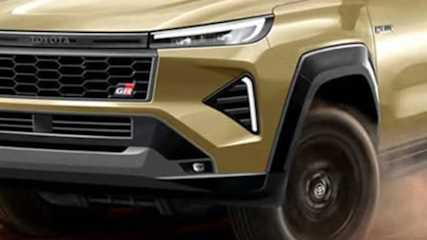
New 2026 Toyota HiLux: What we know so far about the refreshed Ford Ranger, Isuzu D-Max and BYD Shark 6 fighter
Read the article
By Dom Tripolone · 06 Sep 2025
New car launches don’t get much bigger than a new Toyota HiLux ute.The trusted workhorse has been at the top of the sales charts for the best part of a decade, and a new and improved version is due next year to fight off a wave of new challengers.Details of the new HiLux have started to leak consistently and spy shots have surfaced of a single cab version testing overseas.CarsGuide has joined the dots to get an idea of what this next-generation HiLux will be like.Here’s everything we know so far. Not much to get excited about here, unfortunately.It is believed the HiLux will launch with the same 2.8-litre turbo-diesel motor with 48-volt mild-hybrid assistance found in the current HiLux.It’s unlikely this will be the sole power source for long, with the company making no secret it is working on plug-in hybrid power.Toyota’s new RAV4 will be the brand’s first plug-in hybrid in Australia when it launches next year. That model’s 2.5-litre four-cylinder petrol and electric motor combo deliver 227kW, and while torque is unknown expect it to be in the 500Nm range.That kind of performance eclipses what’s available in the current HiLux.Toyota has pounded the table on many occasions to say its vehicles must be fit for purpose and it won’t rush out a new technology until they are certain it will do what its customers expect.So don’t expect the PHEV version too soon, but it makes sense for it to lob in 2027. This is when the federal government’s New Vehicle Efficiency Standard (NVES) really starts to bite and fines will make diesel-powered ute prohibitively expensive.New spy pics published on Instagram by @Autonetmagz give us an idea of what it may look like.Japanese outlet Best Car has developed some digital renders (seen above) that bring those spy shots to life.The front end is where all the major changes have occurred with the HiLux bringing the brand's new styling language.Sharp, narrow headlights are paired with lower DRLs and a big black grille with hexagon-like design, which is similar to that seen on the new RAV4 and Corolla Cross.The side panels and rear look mostly untouched with big chunky cladding around the wheel arches and side steps.It is also believed to have a step integrated into the tray exterior for easier access.Think of it as an evolution not a revolution.Bigger changes are coming to the cabin, according to design sketches published by Thailand's Headlight Magazine.The design sketches show a focus on in-cabin screens, increased storage, a new dash and vents, and — in a nod to its 4WD siblings — the gear shifter from the Toyota LandCruiser Prado.Hard to say, but nothing new comes cheap.Buyers can probably expect a jump of a few thousand dollars on the current model. This means the cheapest dual-cab pick-up version with the mild hybrid assisted engine will cost close to $65,000 on the road.Toyota is unlikely to give up on the lower end of its range, so buyers can still expect budget focused two-wheel drive single carb models to land in and around the $50,000 range.We haven’t seen the new version yet, which means there is no chance it’ll land in showrooms this year.There is a strong chance it will be revealed at some point this year, which indicates an on sale date of the middle of next year.
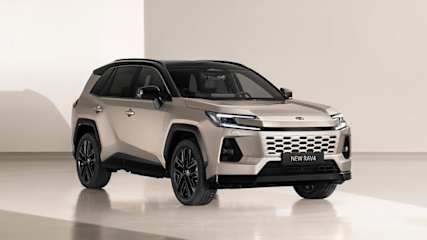
More tech, extra spec & performance option for new RAV4
Read the article
By James Cleary · 03 Sep 2025
It’s not due to arrive in Australian showrooms until the first half of 2026 but Toyota Australia has confirmed the model line-up and high-level specification for its all-new, sixth-generation Toyota RAV4.Highlights are improved hybrid powertrains including a plug-in hybrid (PHEV) option, upgraded safety, new multimedia tech and an additional “performance-focused” GR Sport grade.The new model walk-up will cover six variants, offered with a choice of front-wheel drive and all-wheel drive hybrid and PHEV powertrains.'The GR Sport flagship will be offered exclusively with the new PHEV AWD powertrain featuring a 2.5-litre engine working in concert with front and rear electric motors powered by a 22.7kWh lithium-ion battery. Its maximum combined power output of 227kW makes it the most powerful production RAV4 so far.Along with the extra power the GR Sport features high-performance dampers, a stiffer rear suspension brace, retuned suspension and power steering calibrations plus a 20mm wider track.Toyota has confirmed the PHEV set-up offers EV-only driving capability and will also be offered in the mid-range XSE in AWD and 2WD, the latter’s front-drive configuration using a single electric motor generating 200kW. PHEV grades also offer a 1500W inverter capable of powering small appliances.The PHEV GR Sport will join the existing GX, GXL, Edge, XSE and Cruiser grades.All new RAV4s will feature a next-gen version of the brand's suite of active safety tech, which it calls 'Toyota Safety Sense', including front cross-traffic alert and improved functionality for the blind-spot monitoring and lane trace assist systems.The ‘pre-collision safety’ system offers greater detection of obstacles, bicycles and motorbikes, while a three-dimensional panoramic view monitor is designed to assist in navigating tight spaces.The entry-level GX will include 17-inch alloy wheels, LED headlights, a 10.5-inch multimedia display (with wireless Android Auto and Apple CarPlay), a 12.3-inch digital instrument cluster, smartphone integration, five USB-C ports, dual-zone climate control and more.Then, the GXL adds 18-inch alloys, privacy rear and side glass, a leather-accented shift knob and steering wheel, eight-way electric driver’s seat adjustment (with two-way lumbar support) and wireless device charging.The “adventure-focused” Edge grade is all-wheel-drive only and features unique front and rear bumpers with integrated silver skid plate and wider black wheel arches, as well as synthetic leather trim, heated front seats, a power tailgate and a larger 12.9-inch media touchscreen (with integrated heating and ventilation controls).As per other hybrid AWD grades, the Edge features ‘downhill assist control’ and a ‘Trail & Snow’ drive mode.The XSE (hybrid and PHEV) adds 20-inch black alloy rims, dark ‘stainless steel-look’ moulding, black front and rear bumpers, a tilt and slide glass sunroof and two-tone exterior paint. Inside, it features a combination synthetic leather and suede upholstery, three-stage front seat heating and ventilation, driver memory, electric front passenger seat adjustment, a panoramic view monitor and ‘Climate Concierge’.The Cruiser swaps in 20-inch machined black alloy wheels, high-grade LED headlights, a tilt and slide panoramic roof, leather-accented seat trim, a head-up display, two wireless smartphone chargers, a digital rearview mirror and a nine-speaker JBL premium audio.The GR Sport flagship includes GR-themed front and rear bumpers, a wing-type spoiler, 20-inch machined alloy wheels, aluminium pedal covers and GR Sport seats, steering wheel and suede knee pads, paddle shifters and unique stitching.Expanded ‘Toyota Connected Services’ (accessed via the 'myToyota Connect' app) provides a range of security and convenience benefits to customers, including vehicle data, connected navigation, voice assistant and emergency communications.The updated multimedia is powered by ‘Arene’ software claimed to deliver faster processing and over-the-air updates.Toyota says the new system retains a home button which remains available whether running the native system or paired with a smartphone.Fresh colours will be introduced with the new RAV4 including ‘Massive Grey’, ‘Urban Rock’, ‘Feverish Red’, ‘Dusty Bronze’ and ‘Daintree Green’. Selected colours, including some of the new shades, will be available with a two-tone black roof on the XSE grade.A full run-down of the new RAV4’s specification and pricing will be announced closer to its local arrival in the first half of next year.
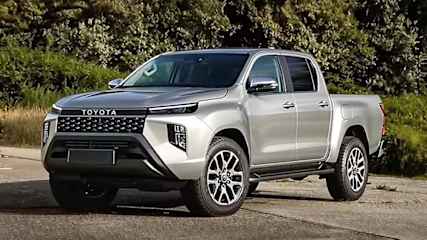
3000 reasons new 2026 Toyota HiLux can't come soon enough as Chinese ute competitors from BYD, GWM and JAC circle the dual-cab king
Read the article
By Andrew Chesterton · 31 Aug 2025
At a glance, last month's sales numbers paint a familiar picture of Australia's dual-cab market. The Toyota HiLux was the country's best-selling vehicle in July, with the Ford Ranger the nation's second best-selling ute.

Top-selling Toyota updated for Australia
Read the article
By Jack Quick · 28 Aug 2025
Toyota has subtly updated its top-selling HiAce commercial van in Australia ahead of deliveries commencing in late August.

China's updated Prado rival gets cool spy tech: 2026 GWM Tank 500 updated in China and now comes with thermal imaging and 'Coffee' software
Read the article
By Laura Berry · 27 Aug 2025
GWM has upgraded the Tank 500 yet again.A new Smart Edition is now available in China bringing more advanced safety systems and luxury touches such as an on-board fridge and James Bond-esque thermal imaging, to the full size SUV.The Tank 500 Smart Edition brings GWM’s new advanced driver safety and navigation system Coffee Pilot Ultra, which uses a roof-mounted LiDAR system along with cameras fitted to the vehicle’s rear spoiler and side panels. A night vision thermal camera image shown in the instrument cluster also provides better visibility of pedestrians and wildlife on dark roads.The Smart Edition also showcases GWM’s new entertainment software — Coffee OS3 — promising faster processing and better graphics for the existing 14.6-inch central media screen and rear passenger display.Luxury touches coming on the Smart Edition include a 50W fridge in the centre console armrest, which can now keep items cool to -6C. The new edition also brings updated exterior styling to the Tank 500 including the brand’s new grille, redesigned headlights, fixed sidesteps and a new green body colour.The new Tank 500 Smart Edition launched in China this week, and CarsGuide has reached out to GWM Australia to confirm its arrival locally.The current Australian GWM Tank 500 range has three grades: the Lux Hybrid, Ultra Hybrid and Vanta Hybrid with prices starting at $66,490 driveaway.The Tank 500 is a petrol-electric hybrid vehicle and it's also a capable off-roader with a ladder frame chassis and four-wheel drive making it a rival to the Toyota Prado for budget conscious buyers.In Australia the Tank 500 is offered with one powertrain — a petrol-electric hybrid combining a 2.0-litre turbo-petrol engine with an electric motor making a combined 255kW and 648Nm.Since the vehicle launched in Australia in 2024 the Tank 500 has undergone a host of upgrades to suspension, driver safety alert systems and exterior design.Australian sales of the Tank 500 this year have lagged behind its smaller Tank 300 stablemate. GWM has sold a total of 894 Tank 500s (until the start of August this year) compared to the 2810 for the Tank 300.
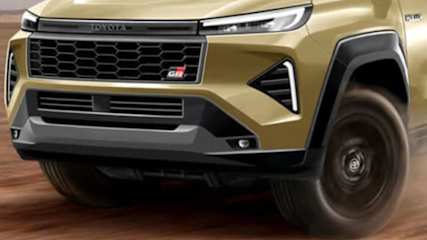
New 2026 Toyota HiLux exposed: Long awaited rival to the Ford Ranger, Isuzu D-Max and BYD Shark 6 surfaces in new spy shots
Read the article
By Dom Tripolone · 26 Aug 2025
The new Toyota HiLux is getting close.
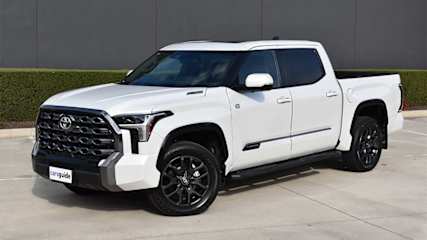
Toyota Tundra 2026 review: Platinum - GVM test
Read the article
By Mark Oastler · 25 Aug 2025
The Tundra full-size pick-up was launched in its native USA a quarter of a century ago, yet it's taken that long for the big American to finally be available in Aussie Toyota showrooms. So, has the much anticipated right-hand-drive version been worth the wait?
.jpg)
Secret to China's success exposed by new report ranking the best and worst: Chinese car companies such as Nio and Xiaomi leaving Nissan, Mazda Toyota behind in tech
Read the article
By Laura Berry · 25 Aug 2025
New Chinese carmakers such as Xiaomi, Xpeng and Nio are leaving established manufacturers such as Toyota, Nissan and Mazda behind when it comes to technology a new report has found, leaving doubts about whether the traditional players can ever catch up.

Toyota is the coolest car company in the world for petrolheads: How the world’s most boring brand had a stunning glow-up with the 2026 Toyota Yaris GR, Corolla GR, coming new Celica, MR2 and next-gen GR86 and GR Supra leading the charge | Opinion
Read the article
By Stephen Ottley · 25 Aug 2025
The recent news that Toyota Australia is discontinuing the GR Supra was sad for lovers of performance cars. But if you think that means Toyota is reverting back to its boring days of making ‘whitegoods on wheels’ then you are deeply mistaken.In fact, this is arguably the start of a golden age for not only Toyota as a brand, but the entire performance car market. Not only will the GR Supra be replaced by an all-new generation model, it is expected to be joined by a new Celica and possibly a revived MR2, if the rumours are true.And when I say ‘rumours’ I really mean teasers that Toyota itself has deliberately sent out into the world. In late 2024 it released an episode of its animated YouTube series, Grip, which featured a list consisting of: ‘Supra Mk6’, ‘Celica Mk8’, ‘MR2 Mk4’, ‘GR86 Mk3’ and ‘GR GT3’. Given Grip is an animated show and thought must be put into every element of the frame, those names didn’t appear by accident, but rather by design.Bringing back all of the brand’s iconic performance cars, which would join the existing GR Yaris and GR Corolla hot hatches in an expansive line-up of hero models would be something truly remarkable for petrolheads around the world.On top of this, Lexus just showed off a new sports car concept at the Monterey Car Week. This new rear-wheel drive coupe is expected to replace both the RC and LC coupes, form the basis of a new GT3 racing car and could even be V8 powered. If that all turns out to be true, it will be yet another major boost for the wider Toyota group’s coolness factor.It’s all part of a wider, all-encompassing strategy that Toyota began over a decade ago, with the launch of the revived 86 in 2012. This was a massive statement vehicle from the company, offering a rear-wheel drive coupe for under $30k, and a good one too, made a major impact on the perception of Toyota as a brand.The next most important model after the 86 to the brand’s current state of cool is the 2015 Toyota Prius. That was the first model to utilise the so-called Toyota New Generation Architecture or TNGA as it is more commonly known. Unlike the famous Volkswagen ‘MQB’ architecture, which was a modular platform able to be scaled up and down for a multitude of models, TNGA was broader than that. Yes, it was a scalable platform, but it spawned multiple platforms (TNGA-B, TNGA-F, etc) and it also represented a philosophical shift for the company.Under the leadership of Akio Toyoda, grandson of the company’s founder, this automotive behemoth made a conscious decision it was not going to be boring anymore. It decided that, even though it was incredibly successful, it should make a major change and not just make dependable, good value cars, but rather dependable, good value cars that are enjoyable to drive.This spurred the expansion of Gazoo Racing from Toyoda’s personal motorsport team to a global performance sub-brand that now offers multiple models with more clearly on the way. If all the speculation is right and Toyota rolls out a new Celica and MR2, alongside the new Supra, it will position the Japanese giant as arguably the most performance car heavy brand in the world.Which would be a remarkable turn around for a car maker that was once the subject of mockery from driving enthusiasts. Instead your future Toyota showroom has the potential to become a one-stop shop for car lovers looking for performance in any size and shape.




